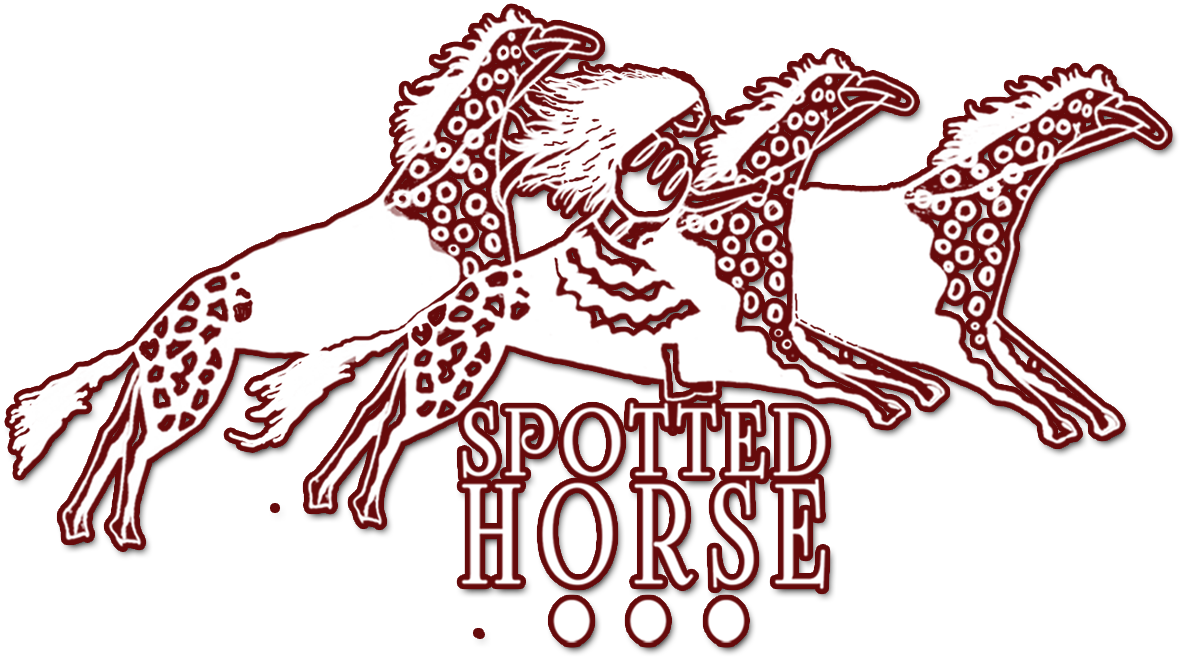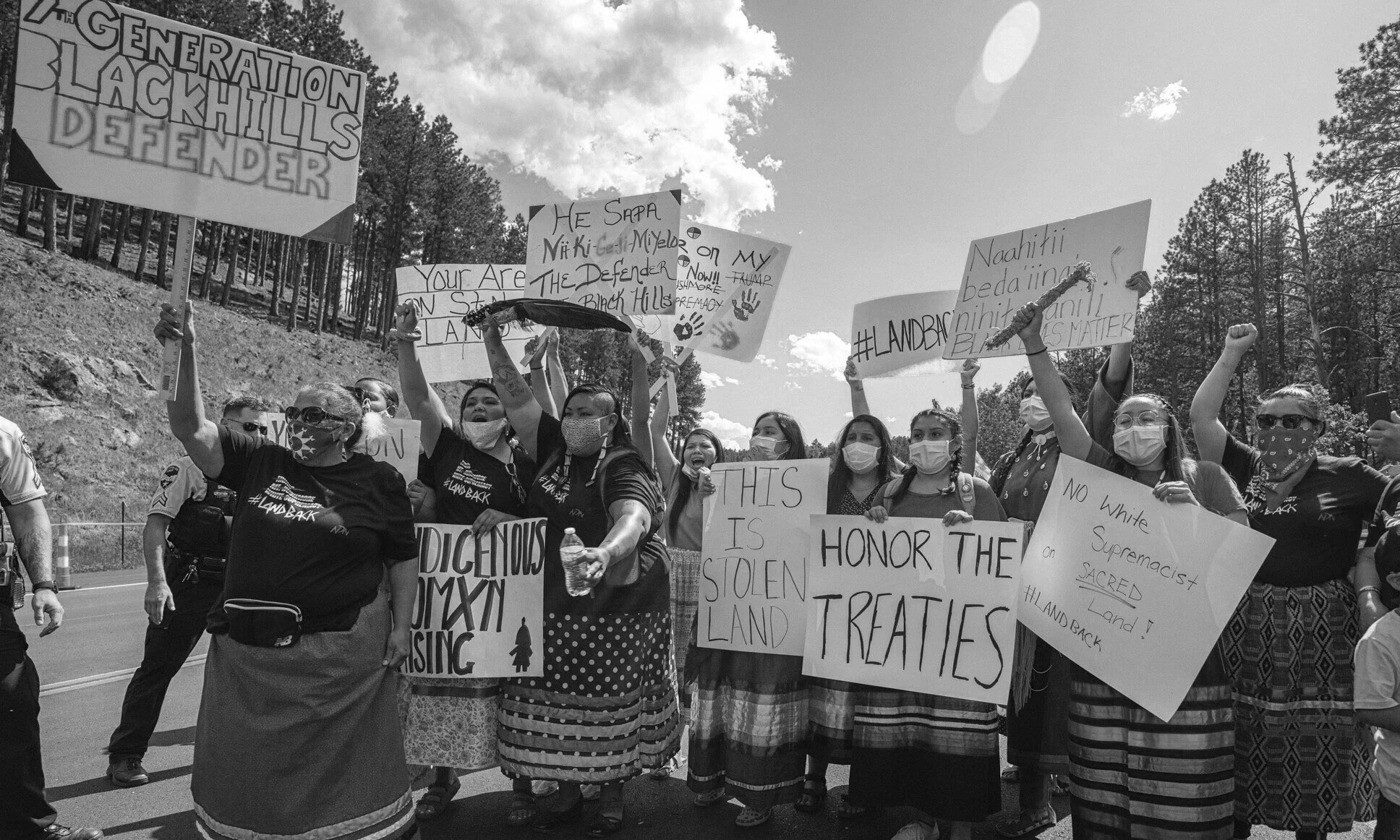Welcome to the Deep North by Winona LaDuke
Water Protectors at the Enbridge Clearbrook Terminal 2019 on Indigenous People’s Day March.
Photo by Sarah LittleRedfeather
Welcome to the Deep North
Winona LaDuke
President Trump is coming to Bemidji Minnesota, a town between three large Anishinaabe reservations, Red Lake, White Earth and Leech Lake. A town which is the home to Bemidji State University, some stellar schools, and also some racism, big time. Beltrami County, is where Bemidji is located. It’s also where former Blackduck Mayor, Rudy Patch, resigned after an infamous Facebook post about the George Floyd riots. This is where there are more Natives in jail, or who die from police per capita than anywhere else in rural Minnesota. This is the Deep North.
This is also a battleground for America’s future, where Republicans hope to wrest more power from a Democratic Governor, Tim Walz and his Lieutenant Governor, Peggy Flanagan, the first Native woman in history to hold that position. There’s a hard push on the north country to turn Red, and there’s a grassroots movement which is pushing back.
Take Beltrami County
Tim Sumner is an incumbent running for County Commissioner, a Red Lake Tribal member. He along with fellow incumbent, Reed Olson, were the only two county commissioners who opposed Beltrami County’s January 2020 resolution. In January, the county became the first in the state and second in the nation to vote against allowing the placement of refugees in its community.
"As a representative of my part of the county, and considering the current state of affairs in our county, I don't feel it's prudent to bring refugees to our county," said Beltrami County Commissioner Jim Lucachick, "when we need to take care of all the issues we have now." County Commissioner Tim Sumner had a different position: "I think most of the people here today are re-settlers. It just seems un-American to me to say that 'You're not welcome.’"
Roseau County, just to the north, passed a February resolution designating the county a “Second Amendment Dedicated County,” more commonly known as a Second Amendment “sanctuary county.” That is sanctuary for firearms. Roseau county joined more than 400 such communities nationally to adopt this resolution, the first in Minnesota. The resolution notes, that the county “wishes to express opposition to any law in the future, beyond existing laws to date, that would unconstitutionally restrict the rights of the citizens of Roseau County to keep and bear arms.”
It’s the deep north, and the tensions are rising.
Water Protectors were met by strong harassment (Pro Line 3 MN4L3 group members) at the Enbridge Clearbrook Terminal 2019 on Indigenous People’s Day March. Photo by Sarah LittleRedfeather
Then there’s the pipeline -- that’s Line 3, the largest tar sands pipeline from Canada, one of the few remaining pipeline projects proposed, in a tottering fossil fuel market. That’s from Enbridge, the third largest corporation in Canada.
That pipeline has met steady opposition from the over 63,000 people who testified against the line in seven years of hearings, as compared to only 3,000+ in favor. This summer Enbridge ramped up its bogus Minnesotans for Line 3 marketing campaign as the state Department of Commerce (DOC) and the Attorney General joined citizens to oppose the pipeline project in the state Court of Appeals along with several environmental groups. Enbridge failed to persuade the state that their pipeline was a good idea, so they moved to the Republican legislature to start punishing political appointees. In a swipe at Governor Walz, Line 3 cost Steve Kelley his role as DOC Commissioner when the Republican-led Minnesota Senate canned him instead of confirming him for the job, after being joined by two longtime northern Minnesota Democrats, Tom Bakk and David Tomassoni.
Militarizing the North
In the meantime, more military and police equipment are moving into the north country, much of it to be paid for by the Enbridge Company, further militarizing the Deep North.
Menagha is a town of about 1,300 people. Poor by economic standards, rich in Finlanders. In December of 2019, Menahga Police Chief Gunderson reported to the City Council that, with regards to Line 3, they were “not sure what to expect but needed riot gear including helmets. Masks shields and less lethal munitions…. such as tasers and modern stuns (December 4, 2019 Menahga Messenger).
Meanwhile, the town to the north of Menagha, Park Rapids (approximately 3,700 people), is also gearing up for a Line 3 battle. At the Hubbard County Commissioner’s meeting, the report came in: “Enbridge is going to start Line 3, hopefully, in 2020, and I know we’ve budgeted overtime,” Kay Rave, Hubbard County Auditor explained at a Commissioners Meeting.
“The sheriff’s department has been training for that. Doing our best to prepare for the unknowns that come with the building of Line 3.”
In July, a new armored personnel carrier arrived to stay in Park Rapids, another is rumored to be stationed in Menagha.
And then there’s Duluth. The first big wave of riot gear came to Duluth in 2019, about $140,000 of it, with a lot of opposition from church groups and local citizens.
Now, honestly, until George Floyd’s death, there hadn’t been a riot in Duluth since the 1920 lynching of three Black men, Elias Clayton, Elmer Jackson and Isaac McGhie, by a white mob estimated to be between l,000 and l0,000 people (apparently, they were sort of bad at counting in those days). That was the last riot in Duluth.
This story doesn’t start here.
It has deep origins.
A Hundred Years of Prison
The reality is that Native people have been treated poorly by the state of Minnesota, and remain prisoners of legal, political, economic, and social policies which are discriminatory.
Native people have the highest rates of incarceration, seven times more likely to be incarcerated than non-Natives. Representing 7% of the prison population, we represent one percent of the population. We spend a lot of time in prison.
Native American people make up 1.4% percent of the general Minnesota population; Minnesota prisons have a range of 7% to 22% percent Native American offenders serving felonies. 44% of prisoners reoffend and return within the first year to prison for minor charges.
We also end up at the hands of excessive force. Minnesota State Attorney General Keith Ellison held some mid-December 2019 meetings in Bemidji on ways to reduce deadly force encounters between law enforcement and local residents. Ellison told the hearing that a large number of the deadly force encounters occur in greater Minnesota. More than one has occurred in Beltrami County, where in 2018 a Bemidji Police officer and a Beltrami County Sheriff's deputy shot and killed 34-year-old Vernon May of Red Lake during a traffic stop.
At the hearing, White Earth tribal member Nicole Buckanaga talked about the Beltrami County Jail, which is facing two wrongful-death lawsuits, both Native men. In the death of Vernon May, Beltrami County Attorney David Hanson declined to charge the officer, Bidal Duran, and the deputy, Brandon Newhouse.
“There's no trust to be regained; there's none to be restored. There wasn't in the beginning," Renee Gurneau, a Red Lake tribal mother said. “Just because things happened 200 years ago does not mean they didn’t affect us two minutes ago,” Buckanaga added.
“We’re here to discuss the brutal encounters that we have with police. But we cannot ignore the brutal encounters that we have with the system itself because those police get us to those judges. Well, those judges are throwing the book at us; they’re keeping us in jail. They’re putting barrier upon barrier in front of us.”
The President’s Revealing Attachment to Political and Historical Hot Spots
It seems the President is going for some kind of record with his Bemidji visit September 18.
The Question?
How many political hot spots you can hit and insult people? Particularly people of color that is. The president held a campaign rally in Tulsa the day after Juneteenth celebrations. Tulsa was the home of the former Black Wall Street, until the May 1921 riots. Trump’s campaign was, not surprisingly, met with opposition from Black leaders. Then there was the Fourth of July rally, unmasked at Mt. Rushmore, a place vilified in the history of this country for the theft of the Black Hills.
To the music of the Seventh Cavalry, Trump held a campaign rally.
NDN Collective is an Indigenous-led organization dedicated to building Indigenous power. Through organizing, activism, philanthropy, grantmaking, capacity-building and narrative change, we are creating sustainable solutions on Indigenous terms.
That was pretty much directly targeted at the Lakota community, many of whom descended from survivors of the Seventh Cavalry massacre at Wounded Knee and elsewhere. Trump’s actions resulted in the arrest of 20 Lakota Land defenders. Nick Tilsen, NDNz Collective Director is facing l5 years in felony charges, while other land defenders were charged with misdemeanor offenses.
“Every generation since the land was taken has fought to get it back, and many of us, including myself, grew up around this movement to get our land back,” Tilsen explained.
In an effort to keep his state safe, Governor Walz discouraged Trump from coming to the George Floyd Memorial in Minneapolis, calling it a bad idea. Many viewed it as Trump’s attempt to campaign using the Floyd Memorial as a backdrop.
Bemidji is, perhaps, Trump’s response.
Voting Counts
Native youth will lead . . . New registered voters in Becker County, Minnesota. Photo by Sarah LittleRedfeather
Voting isn’t the easiest in the north, and the Trump administration is pushing to restrict those rights to vote. Most tribal members use a postal service to vote absentee, and most polling stations on the reservations are located in non-Indian township halls, where tribal members have to literally drive through a set of Keep America Great bumper stickers to vote. On and adjacent to the reservation, the color line is also a political line.
The lines are getting sharper.
As November closes in, many people feel intimidated by aggressive pro-Trump supporters. More than a few are skeptical of the political system. That combination has allowed a set of far-right Republicans to retain seats in the north, from Paul Gazelka and Paul Utke to Steve Green. All of those incumbents have supported Line 3, more militarization of the north, and opposed treaty rights and water protection promoted by the tribes.
Native people are running for office at higher levels than ever before, and despite voting challenges, there is a big push to Get out the Vote. Bemidji City Council candidate Audrey Thayer, an enrolled member of the White Earth reservation won 51% of the vote in the democratic primary in Bemidji, and Alan Roy, running against Paul Utke received a warm Democratic support in August.
More will come.
In turn, over the past decades, the tribes have been pushing back, harder and harder, with both US Supreme Court wins on the treaty rights ( the l999 Mille Lacs decision that recognized Ojibwe treaty rights within the l837 treaty boundary), agreements on the l854 and more recognition of treaty rights in the l855 and l863 territories ,tribes exercising jurisdiction over citizens, water quality, and most recently the rights of Wild Rice, or Manoomin.
This past summer, new military equipment arrived in the Deep North, and with it, new tensions. To be clear, this is not a Native/non-Native conflict. But in the times of a pandemic, of economic crises, of political crises, and a collapsing of the fossil fuel industry, the desperation is growing. This is in many ways about the future of the North Country, and there are many forces at work.
We will see how it goes with Donald Trump and the characters in the Deep North. One thing for sure, a storm is brewing and change is here. In the time of the pandemic and societal change, there’s a way to hold on to old hatred and there’s a path towards reconciliation.





